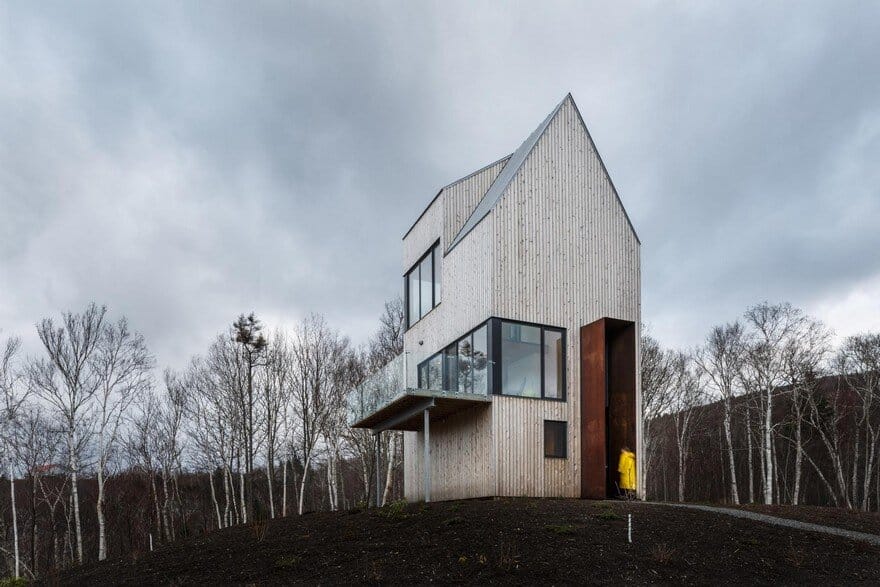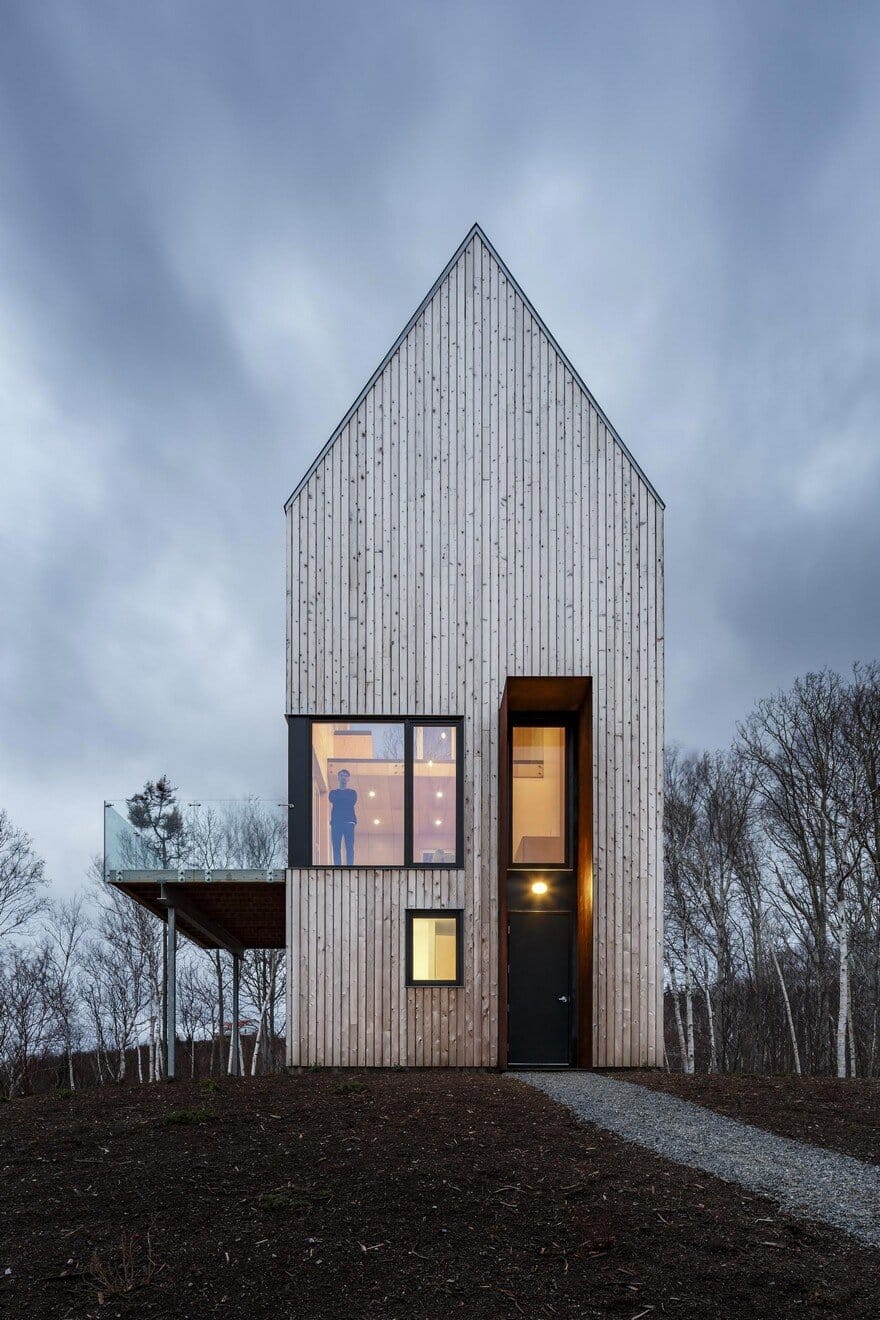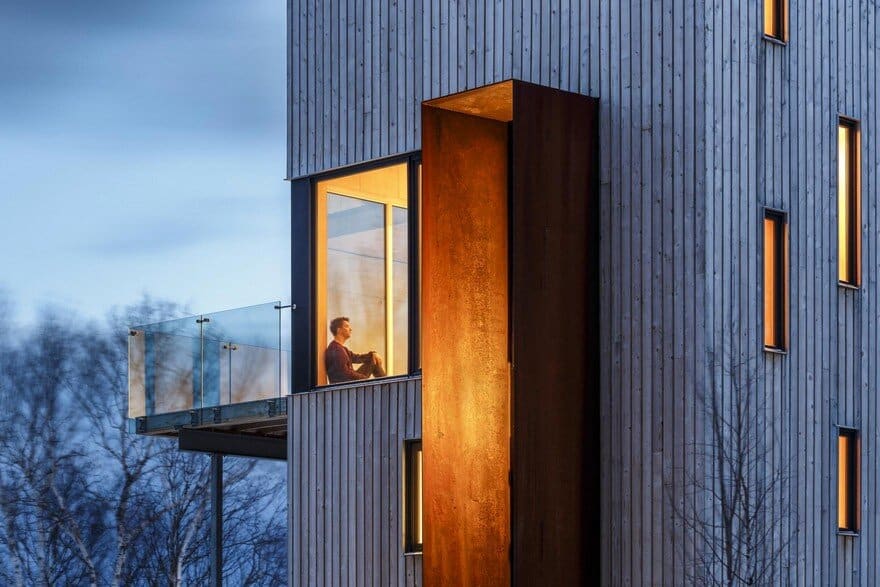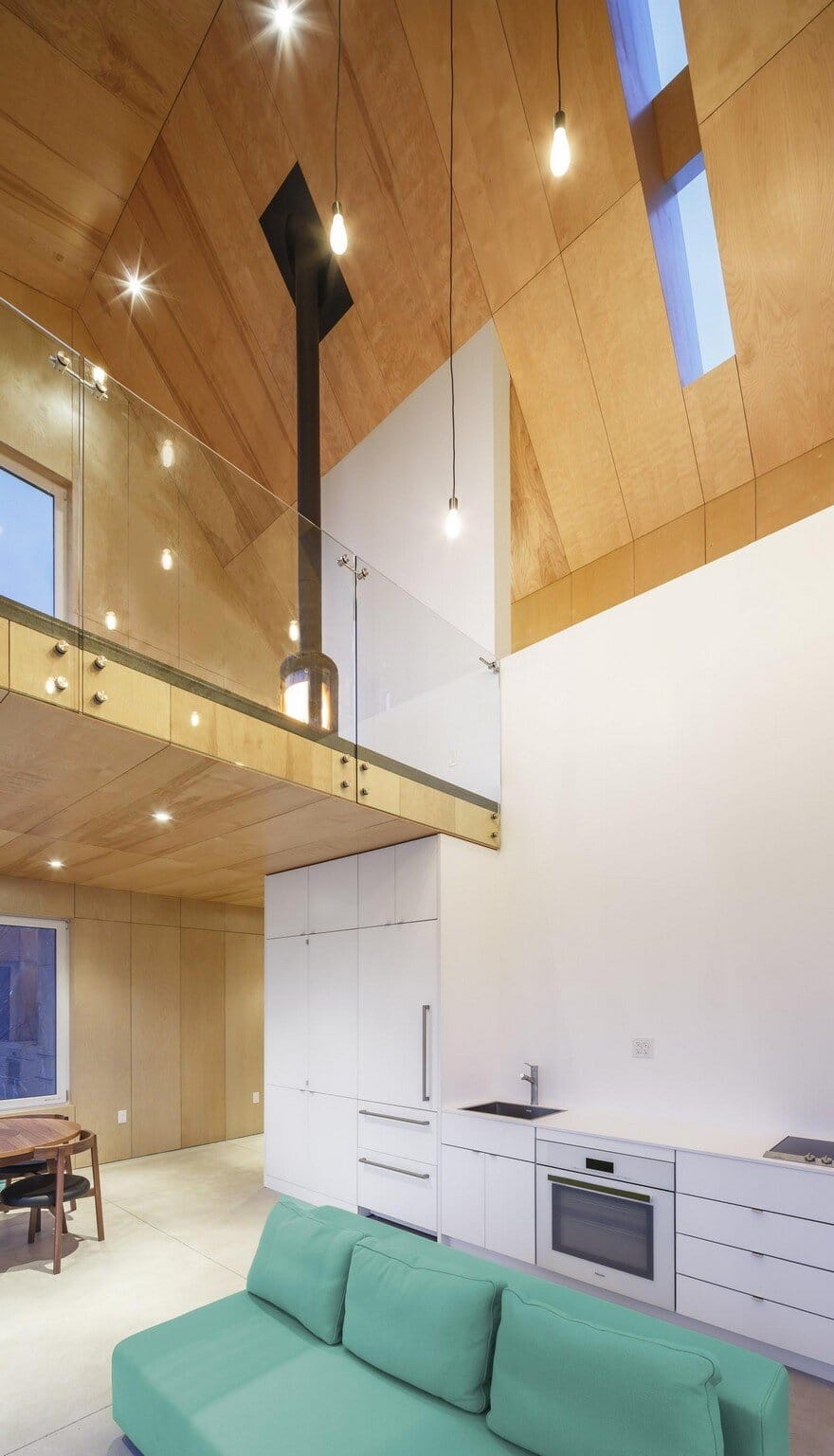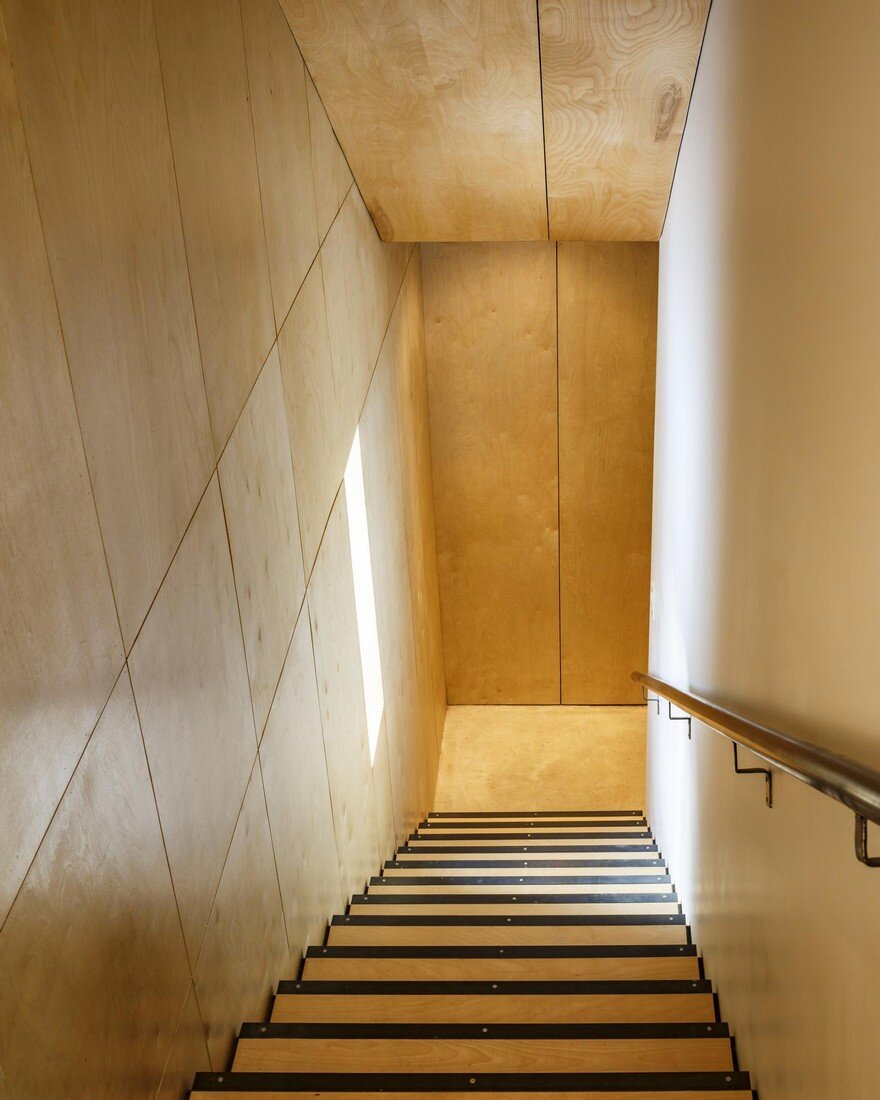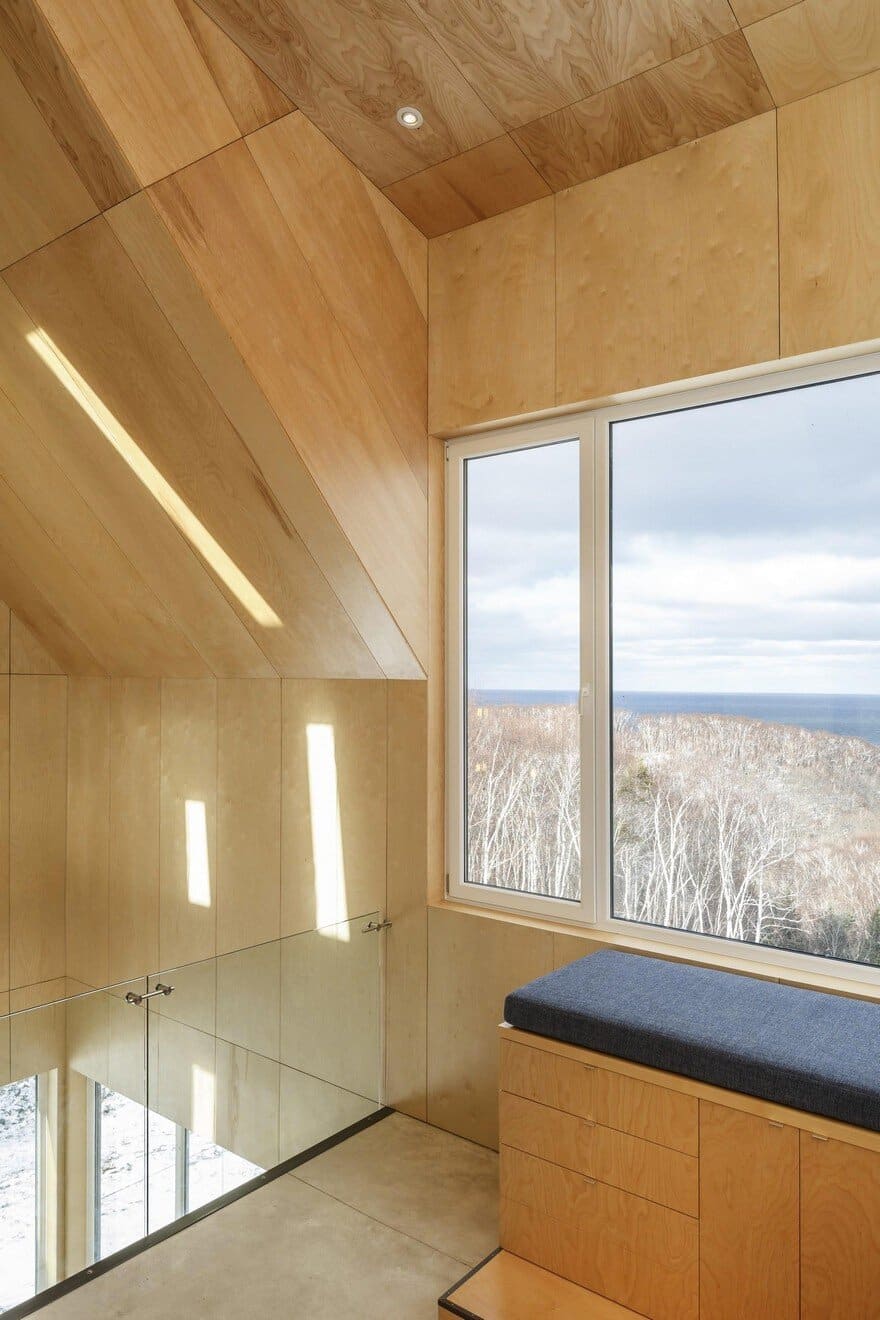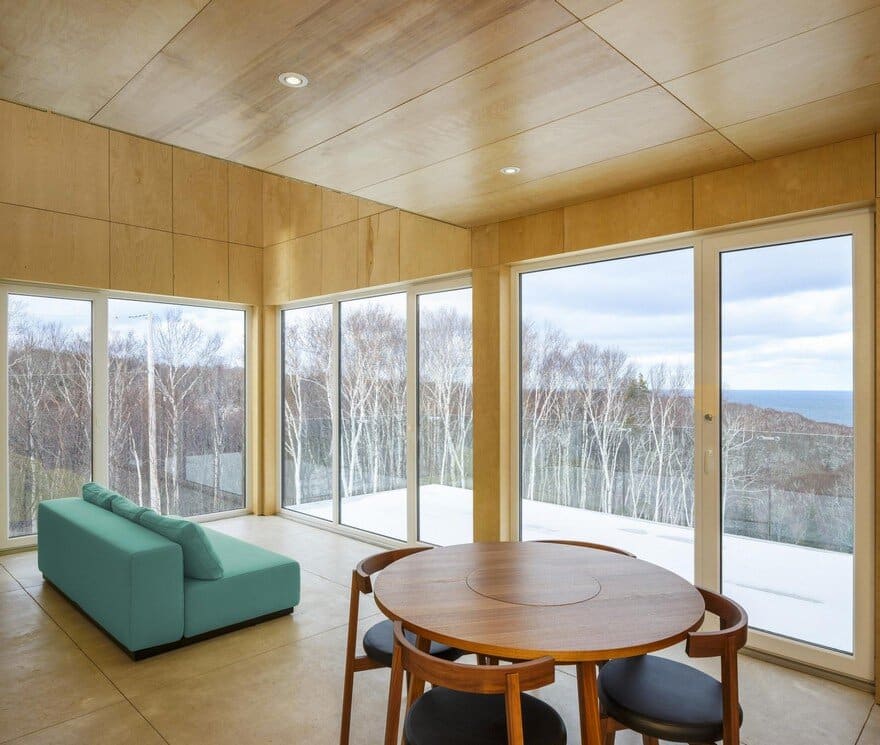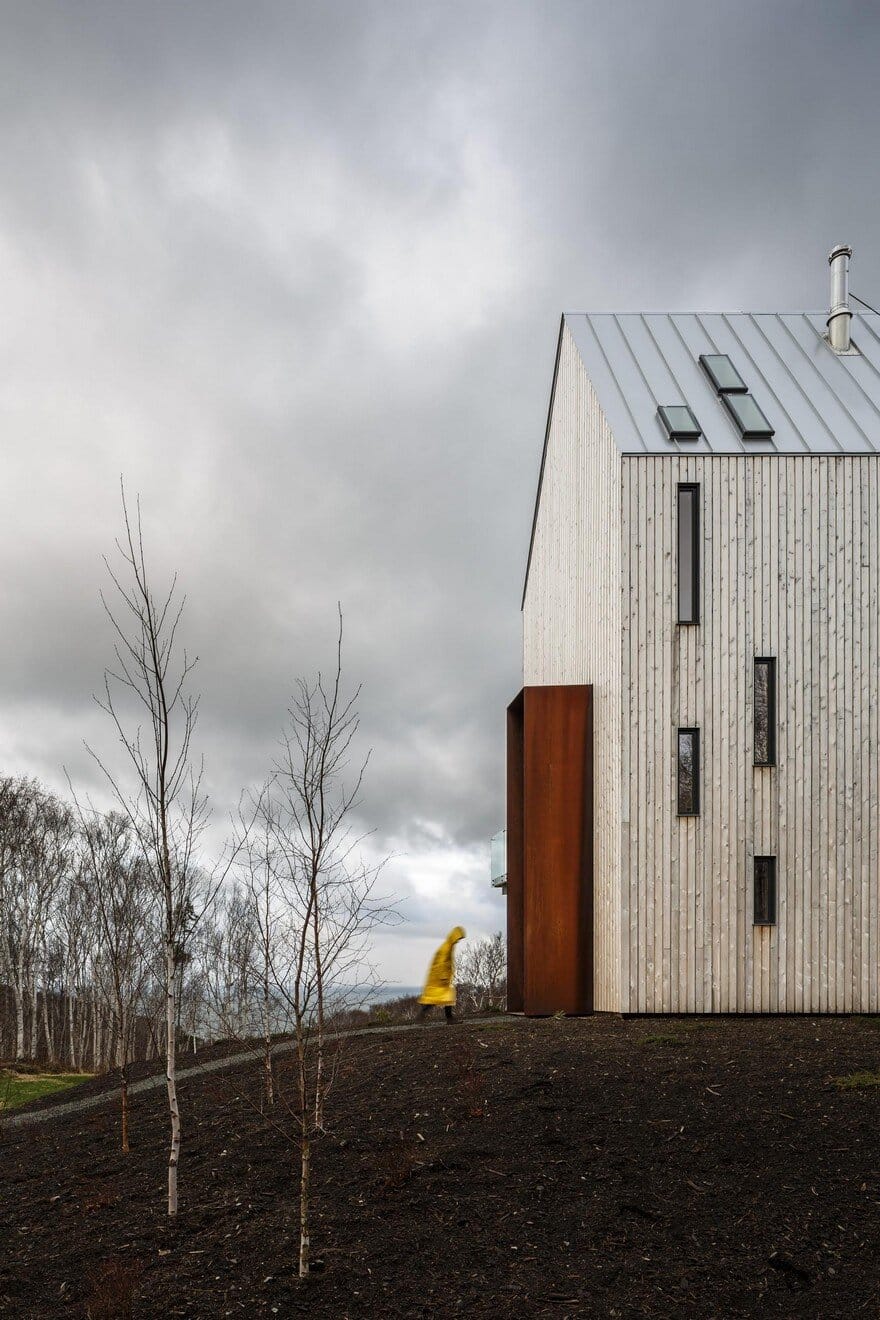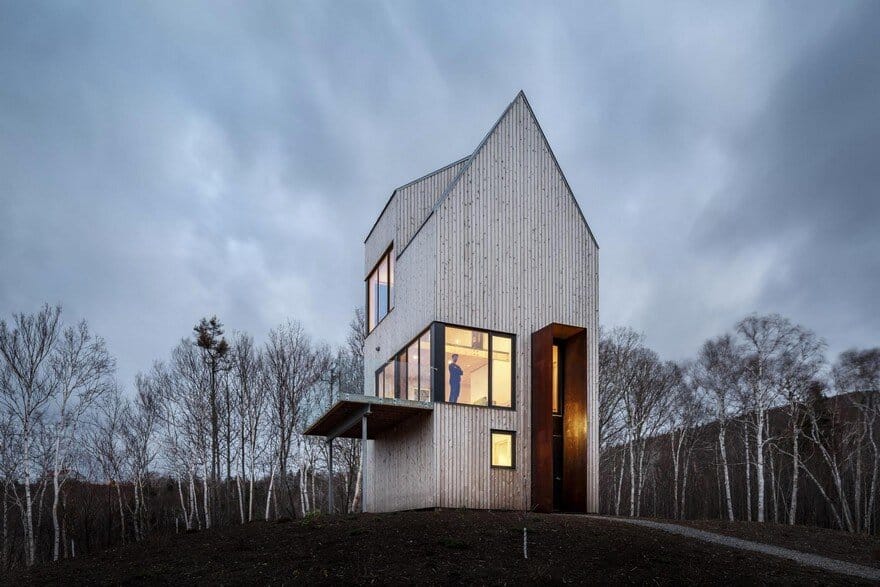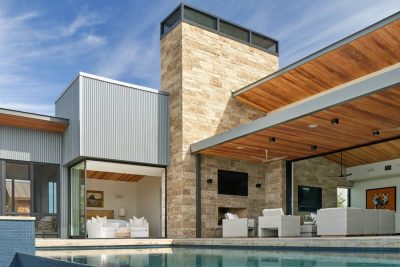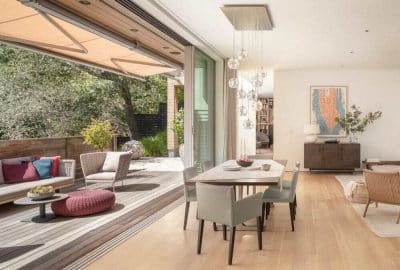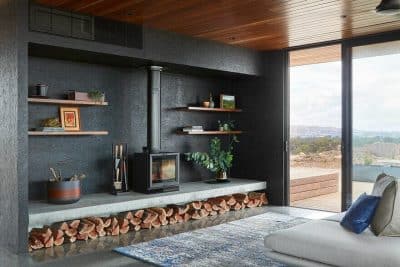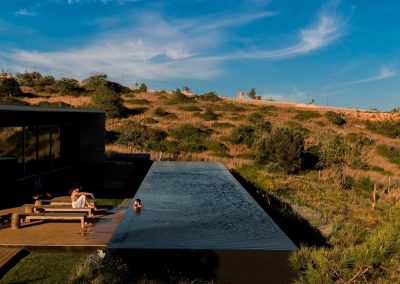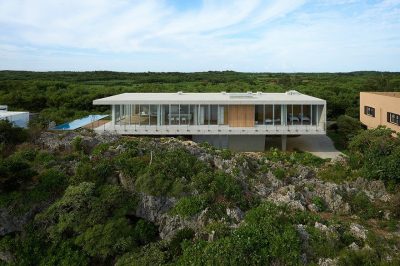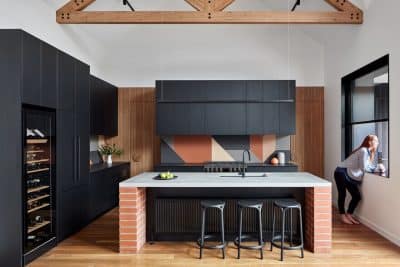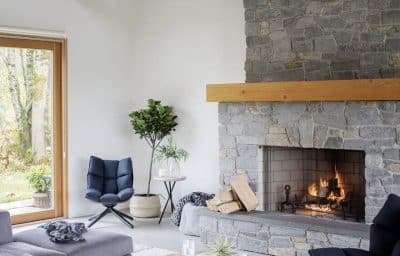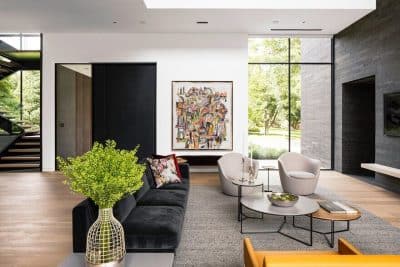Project: Rabbit Snare Gorge / Single Family Summer Getaway
Architects: Omar Gandhi Architects Inc. (Omar Gandhi, Peter Braithwaite, Peter Kolodziej, Maxwell Schnutgen, Elizabeth Powell) Design Base 8 (Jon Siani, Jon Wilson, Garrett Helm)
Location: Inverness, Cape Breton, Nova Scotia, Canada
Photography: Doublespace Photography
Rabbit Snare Gorge is a single family summer getaway set in the rugged terrain of Inverness, on the coast of rural Cape Breton, Nova Scotia. The form is generated by the vertical transformation of the traditional gable, a way to get above the trees and view the landscape. Major and minor openings on this modern cabin follow the path of the sun, it’s setting over the Northumberland strait highlighted in the program. The project is the collaboration between the studios of Omar Gandhi Architect and Design Base 8 out of New York City.
The cabin is the primary dwelling on a 46 acre parcel of land found on the rugged wooded coastline of rural Cape Breton. The cabin is a gently adapted gabled tower which allows it to reach above the forest canopy with two major viewing platforms, one oriented directly towards the ocean and the other a long the length of the convergent brook valley.
The landscape of Rabbit Snare Gorge is defined by the steep slopes of the Cape Breton Highlands, Acadian forest, deep gorges cut by a babbling brook, and the rocky cliffs of the Northumberland Strait. The elevated position of the site allows for a long, wide view of the entire property including the head of the gorge leading towards the ocean.
The procession from this rough landscape into the cabin begins with the entry and bedrooms on the ground floor, a double height kitchen and dining room on the second floor, and lastly the living space on the third floor with the final lookout view of the entire property.
The structure is linked to the local vernacular by a number of formal elements. The archetypal gable and shed forms of the cabin are combined to open views and follow the path of the sun, emphasize the major interior spaces, and accentuate the verticality of the tower, while efficiently shedding snow and rain. Traditional, local wood board cladding is used on the exterior of the cabin. The cabin’s steel entry hoop takes its shape from the entry windbreaks unique to the Cape Breton and Newfoundland coastal communities.
The client, an avid outdoorsman and hobby arborist, has a sincere respect for the natural landscape. Therefore, sensitivity to site and ecological preservation was an early and major design parameter. The tower typology of the cabin offers elevated views and ample programming within a minimal footprint. However, the exposure of the sloped site means it endures the full brunt of heavy Atlantic rainstorms, winter Nor’easters, corrosive salt-spray from crashing swell, and strong suetes winds — local south-easterlies which accelerate down the Highland escarpment to reach speeds of over 200km/h.
The strong, local suetes demand a robust structural system to withstand major lateral and uplift loads. The tall cabin combats these high winds through redundant sheathing—every solid plane, including the interior partition wall, contribute as shear walls, diaphragms and stacked compression rings. The windbreak, constructed out of welded weathering steel, is then hung from the framing.

